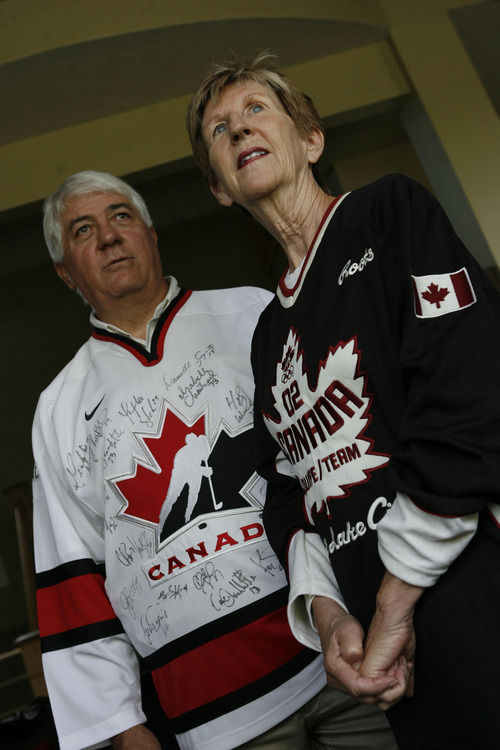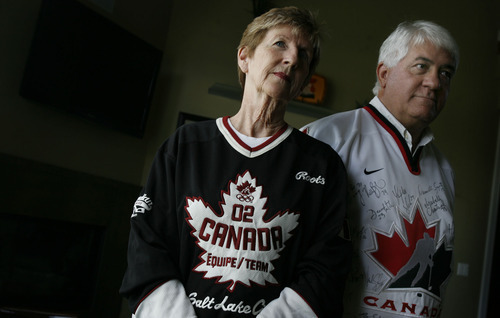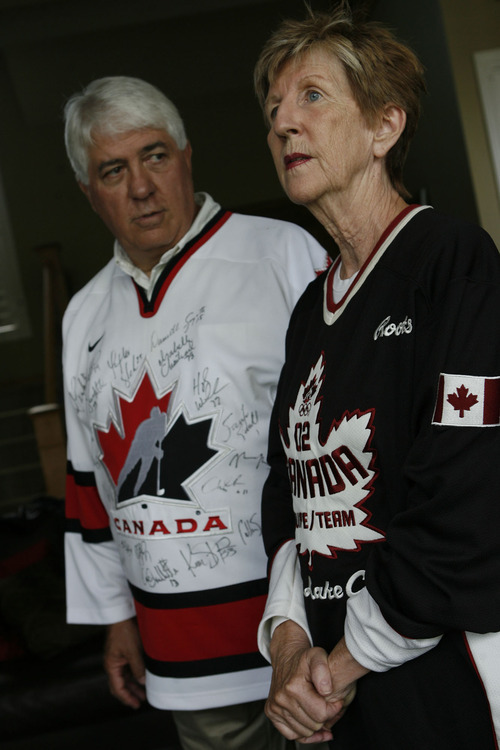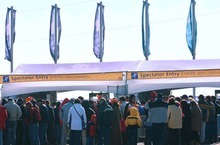This is an archived article that was published on sltrib.com in 2011, and information in the article may be outdated. It is provided only for personal research purposes and may not be reprinted.
Troubled for so long, Salt Lake's Olympic preparations were finally rounding into good shape when the events of 9/11 injected fear into the picture.
Scenes of planes flying into buildings triggered visions of terrorist assaults on Opening Ceremony or Medals Plaza crowds at the Games, just five months away. Or would the Games be called off? For at least a moment, virtually everyone wondered whether it was wise to even try hosting the 2002 Winter Olympics on American soil, to run the risk of becoming the next target of Osama bin Laden.
Within a day, Olympic officialdom made it clear the Games would proceed, needed more than ever to bring the world together in a peaceful endeavor. But it's one thing to tell people there is nothing to fear. It's another to help them believe it to the point that they say, "I'm not giving up my plans to be part of an Olympics."
—
Security elevated • That happened here in February 2002, under the umbrella of an elevated security plan that placed soldiers in full battle regalia on city streets, positioned Black Hawk helicopters overhead and subjected everybody to pocket-emptying magnetometer checks whenever they went into official venues.
Still, more than 25,000 people volunteered to help organizers in all sorts of ways. All of the expected countries sent athletes. Corporate sponsors of the $2 billion Games showed up, along with 15,000 journalists. A sellout crowd packed an Opening Ceremony in which U.S. athletes carried a tattered American flag from ground zero into the stadium. And a high school class from Montana stuck with plans to take its senior trip to the Salt Lake City Olympics.
"We didn't even give it a second thought," said Holladay resident Sonny Tangaro, who served with his wife, Kathy, as volunteer hosts to the Canadian hockey teams. "We figured after 9/11 that security would be such that we were in the safest place possible."
Instilling that kind of attitude was one of Mitt Romney's key challenges after the attacks, recalled Steve Coltrin, one of the closest advisers to the Salt Lake Organizing Committee president.
"We wondered, 'How do we get people's confidence back?' Who knew if something more would happen," said Coltrin, who was in New York City on Sept. 11, 2001, for a torch relay event.
Romney, now running for the GOP nomination for U.S. president, concluded that "what had worked for us in bringing the Olympics out of the bribery scandal was transparency. We developed talking points about the problems we saw and solutions," Coltrin said. "I believe that transparency comforted people. They wanted to know we were on the case, knew their concerns and were doing something about it."
To that end, he added, SLOC's leaders decided to "be noisy about asking for money to address these concerns."
Romney had been in Washington, D.C., on the morning of the attacks, heading to Capitol Hill to lobby Congress for $12.5 million to balance the $200 million security plan. Suddenly, that sum seemed inconsequential.
—
More money • Robert Flowers, who was in charge of the Utah Olympic Public Safety Command, accompanied Romney to a meeting with Alaska Sen. Ted Stevens, an appropriations leader, a few days after 9/11.
"I went to ask him for money," Flowers said, "and Senator Stevens raised his hand, stopped me from speaking and said, 'Mister Flowers, nobody is going to tell you no today. But when it's all over and done with, we will want an accounting for every dollar. I am going to hold you personally responsible.' "
Flowers and his colleague, former FBI agent David Tubbs, were confident the existing Olympic security plan was sound and would not require a complete remolding.
Mainly, more people were needed to "thicken" security. But there also was need for more communications, bomb-disposal robots, radar to detect intruders of the restricted airspace around Olympic venues, fencing and investigation of terrorist threats, including anthrax in the mail.
By the time Flowers gave his accounting to Stevens, the $200 million security plan was up to almost $300 million. The number of security personnel increased to roughly 10,100, including 2,400 soldiers from National Guard units in Utah and 13 other states, 3,100 Secret Service and FBI agents, plus 4,600 law-enforcement officers from 48 states.
What strikes him today is how people throughout the government reacted to what 9/11 wrought.
"Everybody was attacked personally on that day," Flowers said, and that inspired a resolve to "show the American spirit. … Before, it was harder to get people to volunteer resources. But the whole mindset changed, and it changed overnight. It became, 'This is the challenge. This is what I can do and what I want to do.' "
SLOC and the International Olympic Committee delivered security updates to athletes from 78 countries and to representatives of 65 companies that contributed $500 million to SLOC's $1.3-billion operating budget.
—
Volunteer safety • Similar assurances were given to 5,000 volunteers who turned up at Cottonwood High School the Saturday after 9/11 for training. Only a handful didn't show.
Ernest Cuatto, a Murray resident working in transportation, said his desire to be a volunteer never wavered. "I figured what was going to happen was going to happen. I thought we'd have good security. It just felt comfortable to me. [A terrorist attack] was a thought in the back of my mind, but I was still going to volunteer."
Being with the high-profile Canadian hockey players, the Tangaros witnessed how tight the security really was. Once, when their team bus missed an I-215 exit and deviated from its scheduled route, the bus was searched thoroughly upon reaching the hockey venue.
"They took everyone off the bus, checked every bag, used mirrors to look underneath and all kinds of devices," Sonny said. Added Kathy: "Once we all knew the extent of the security, everybody calmed down. We knew they were monitoring everything."
The Class of 2002 from Twin Bridges High School, in a farming and fishing community in southwestern Montana, did not receive any personal security briefings on plans for a senior trip to the Olympics. But after 9/11, the two dozen seniors evaluated the threat and convinced their parents and school-district officials that they should still make the five-day trip to Salt Lake.
As it turned out, said student body president Teran Sewell McGree, "that was the experience of a lifetime for small-town Montana kids.
"I remember we felt safe, and I don't remember the security being so oppressive that it ruined the moment," added the pharmaceutical rep, now a new mom living in Butte. "I don't even remember feeling like it was an intrusion."
That's just how security boss Flowers wanted it.
"It was a wonderful thing that happened here, given the environment we were in," he said. "No other country could have pulled it off as well as we did. I really believe that."
mikeg@sltrib.comTwitter: @sltribmikeg —
Protecting the Olympics
After the 9/11 attacks, security was bolstered in many ways for the Salt Lake City Olympics, held five months later.
• Budget of security plan overseen by U.S. Secret Service rose from $200 million to $300 million.
• Military and law enforcement personnel assigned to the Games increased from 6,500 to 10,100.
• Soldiers replaced volunteers at magnetometers.
• New bag-screening system introduced at Salt Lake City International Airport.
• Hospitals did bioterrorism training exercises after anthrax attacks on East Coast.
• Worst problem was a "riot" at Bud World when beer sales were cut off. —
Coming Friday
Ten years of war that followed the Sept. 11 bombings continue to redefine what we demand of our citizen soldiers.
More online
To see more Tribune and wire service stories about the Sept. 11 attacks, visit http://www.sltrib.com/topics/sept11









